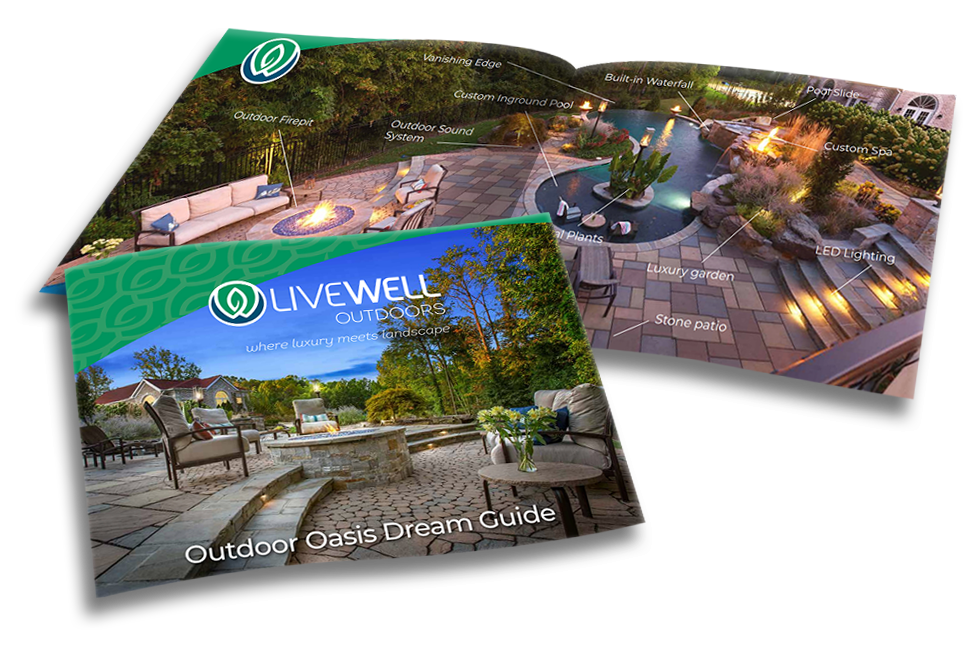
Few things bring family and friends together like fun in the sun by the pool when the weather heats up.
But to really enjoy your pool, you must have the proper swimming pool accessories and supplies on hand to keep it in tip-top shape.
Whether you love hosting poolside bashes or simply soaking in the tranquility of the space, pool maintenance is a daunting task. From choosing pool cleaning equipment to balancing chemical levels, it’s easy to get overwhelmed and see your oasis turn into a mess.
This handy list of essential pool must haves will make sure you have everything you need for a low-stress season of summer maintenance. You'll be diving into summer in no time!
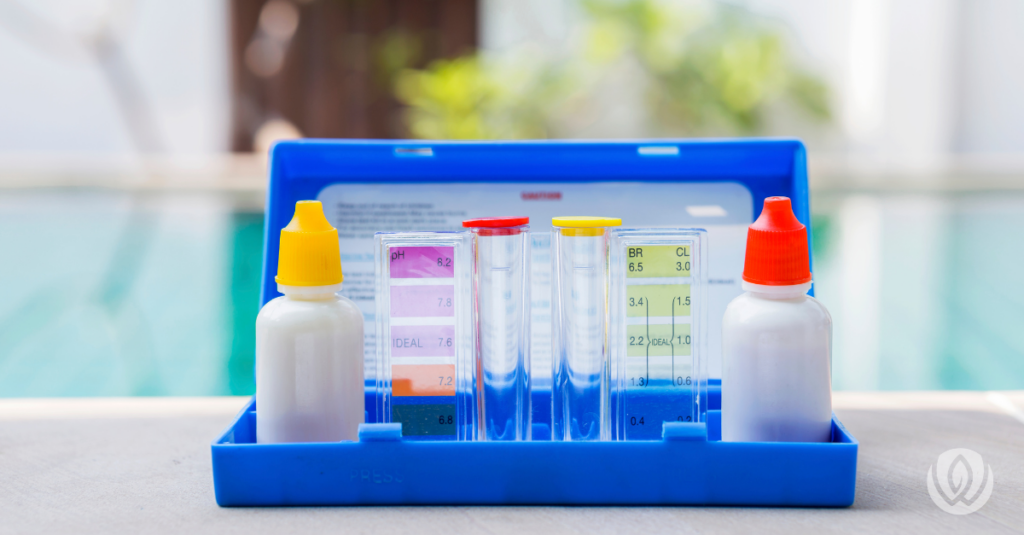
When asking yourself, “What do you need for a pool?” the most important answer is a water testing kit. Regularly testing your pool’s water levels is the key to ensuring the correct balance of products to keep you and your family safe.
Testing your water is an easy task and should arm you with accurate readings of your pool’s:
pH levels reveal how acidic your water is and actually work hand in hand with your pool’s level of alkalinity (which helps to stabilize those pH levels).
Irregular alkalinity levels can cause your pH levels to fluctuate, resulting in smelly, cloudy or even corrosive pool water.
Regular testing and treatment help ensure your pool water stays at the ideal levels of between 7.3 and 7.6 for pH and between 80 to 120 parts per million (ppm) for alkalinity.
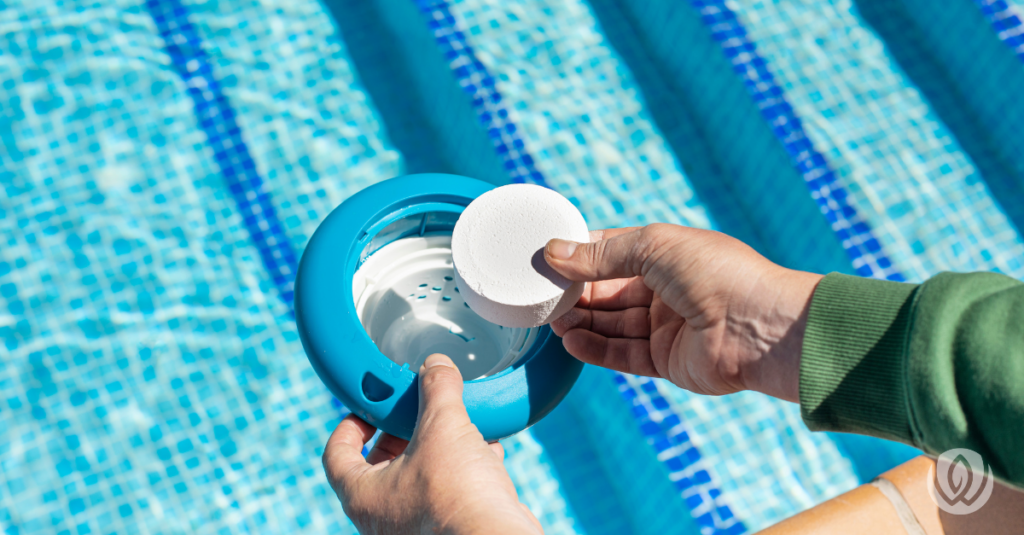
Chemistry is a key factor in pool safety. Pool chemicals help balance water acidity and prevent the buildup of harmful bacteria.
Striking the right balance is essential in keeping you and yours happy and healthy this summer.
And for those of you who prefer a more natural approach to pool maintenance, we’ve got you covered. Here are your options . . .
Crucial to the health of your pool, sanitizers are chemicals that break down any intruding bacteria, ensuring a clean and safe swimming pool.
Low levels of sanitizer lead to too much bacteria in your pool, causing ailments like rashes or red, itchy skin and eyes.
Luckily, sanitizers aren’t a one-size-fits-all situation. Once you understand your options, you can make the best choice for your family’s needs.
When using chlorine, ensure that free chlorine levels are between 1 and 3 ppm.
To get the most out of this option, it’s important to stick to a strict cleaning schedule. For biguanide, keep levels between 30 and 50 ppm.
However, bromine isn’t as stable as chlorine and doesn’t hold up as well to UV light exposure. Levels for bromine should stay between 2 and 4 ppm.
Saltwater works using salt cells that produce chlorine when water passes through, thus cleaning your pool water. While these pools cost more to start up, they can save you money in the long run.
The expense of adding salt 2 or 3 times a season pales in comparison to chlorine pools that require additional chlorine be added every 1 to 2 weeks. Just keep your salt levels between 2700 and 3400 ppm
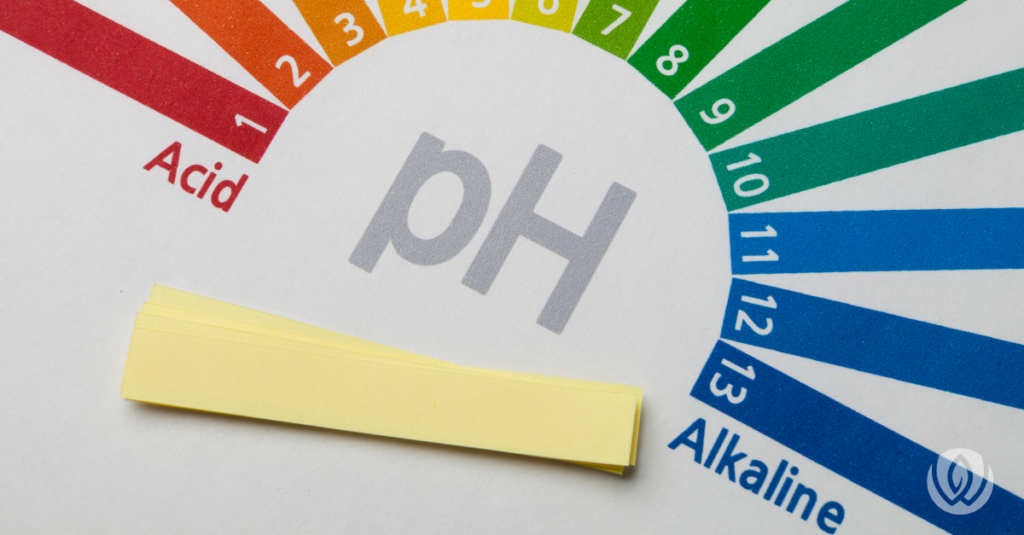
Since Alkalinity is so important to maintaining proper pH levels, you’ll need to give it a bump should it dip below 80 ppm. Otherwise, you risk a domino effect of imbalance in your pool’s chemistry.
You can purchase an alkaline increaser to bring levels back to the correct range, or you could also use household baking soda for a more natural solution!
pH levels are a delicate dance. If they’re too low, your water can become acidic and damage the pool itself. If they’re too high, the resulting soft water can negatively affect your sanitizer.
Since maintaining correct pH levels is so important to the safety of your pool water, you may need to use a pH increaser or decreaser to keep those levels in the sweet spot.
Even if you do choose traditional chlorine to sanitize your pool, it should never actually smell like you do. Over time, sanitizer levels drop, leaving you with less-than-clean pool water.
Pool Shock is a chemical that helps spike sanitizer levels, leaving you with clean water (that doesn’t smell like a motel pool). Including weekly shock treatments in your pool care plan will help streamline future maintenance.
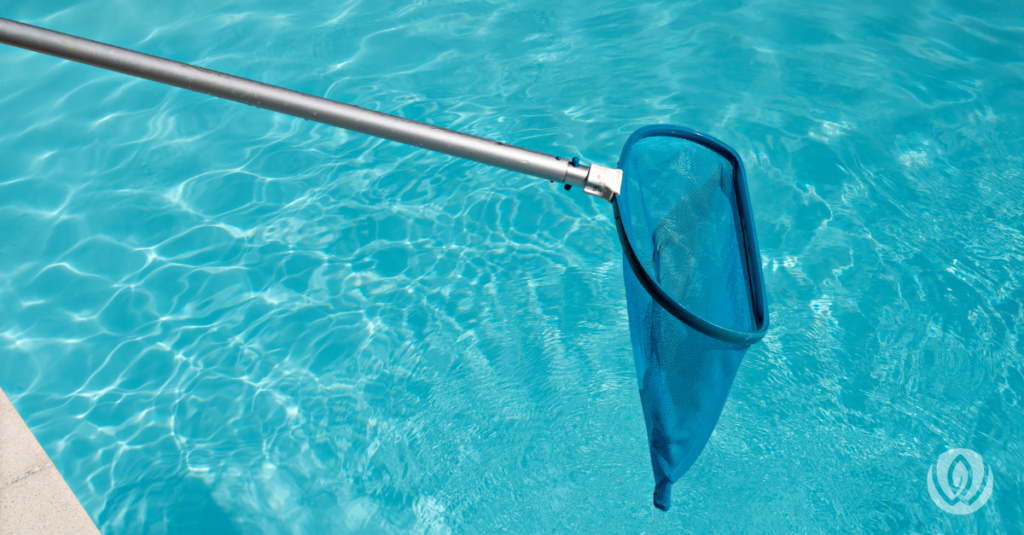
Pool skimmers are pretty darned satisfying. There’s instant gratification in the act of removing pesky leaves and other debris from your pool. However, using one provides long-term benefits as well.
By regularly removing yard waste from your pool, you’re reducing the workload on your pool filters, potentially prolonging their life.
Just be sure to purchase the correct kind of skimmer. If you have a lot of trees nearby, you’ll probably need a deeper skimmer. If you don’t see a lot of leaf fall, a standard skimmer should work great!
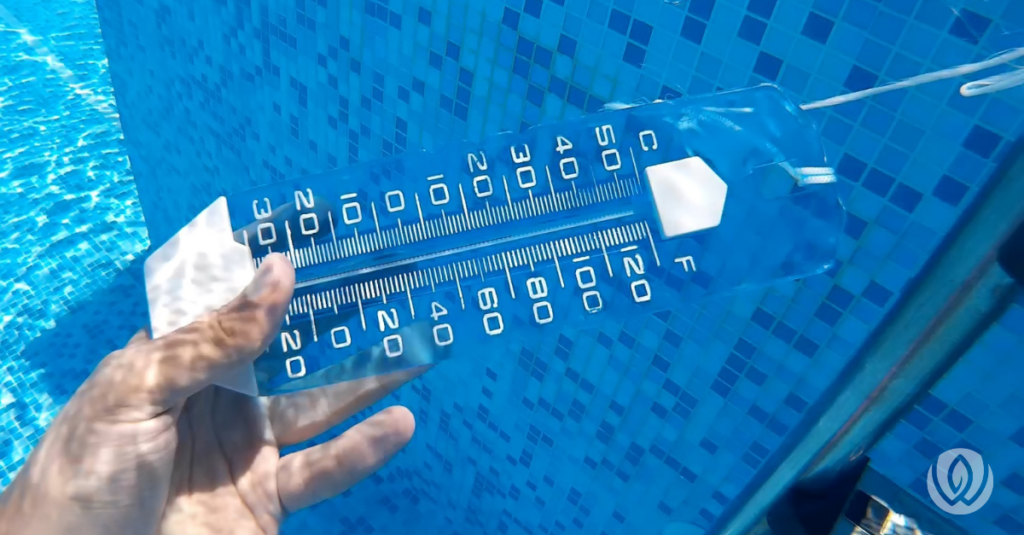
While there’s nothing like taking a dip in a perfectly heated pool, keeping tabs on your pool’s temperature is more than a way to ensure a more comfortable swim. Water temperature is also crucial to your sanitizer levels.
For optimal sanitizer effectiveness, you’ll want to maintain a pool temperature of 77-82°F. You can monitor your water temperature with a simple floating thermometer, or you can even invest in a digital thermometer that sends you real-time updates!
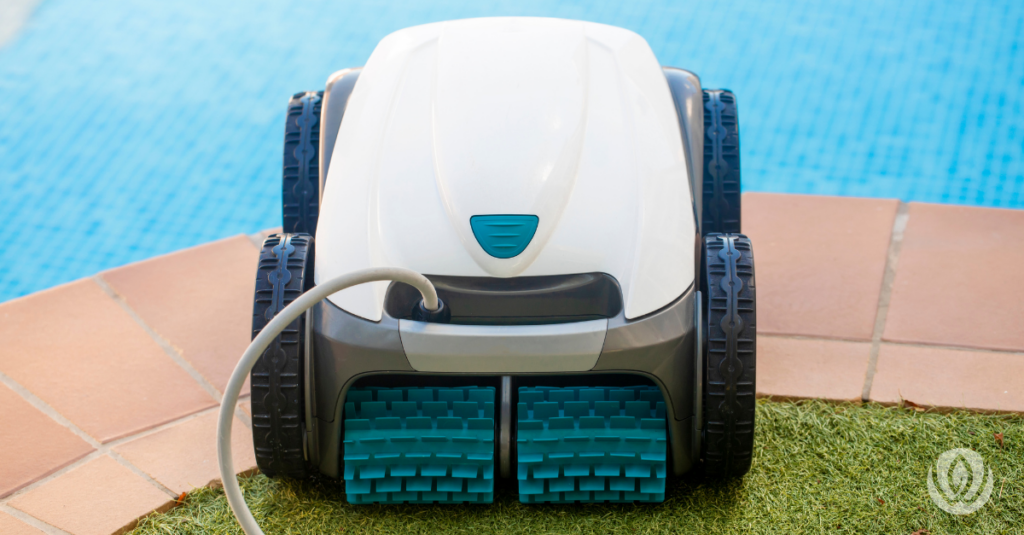
Over time, pools can develop a thin layer of scum on the floor and walls. While it’s normal for your pool to develop this film under the water, it’s not great for the long-term health of your family or your pool.
Not only is it a little gross to have a slippery pool, but buildup can also damage your pool liner over time. You can protect both the short-term and long-term health of your pool by vacuuming it regularly.
It is possible to rent pool vacuums from some establishments, but due to how often you’ll need to vacuum, typically as part of your regular pool cleaning schedule, purchasing your own is usually the best way to go.
While your vacuum does the heavy lifting to clean the bottom of your pool, you’ll also want to include a pool brush in your pool cleaning kit.
By scrubbing the walls of your pool with a brush while using your vacuum, you can be sure your entire pool is getting squeaky clean.
When completing your arsenal of swimming pool tools, don’t forget your telescopic pole to attach them to.
Telescopic poles are customizable, allowing you to change their length using adjustable sections. Then, you can simply attach the tool you wish to use. Most poles work with skimmers, brushes, and sometimes even vacuums.
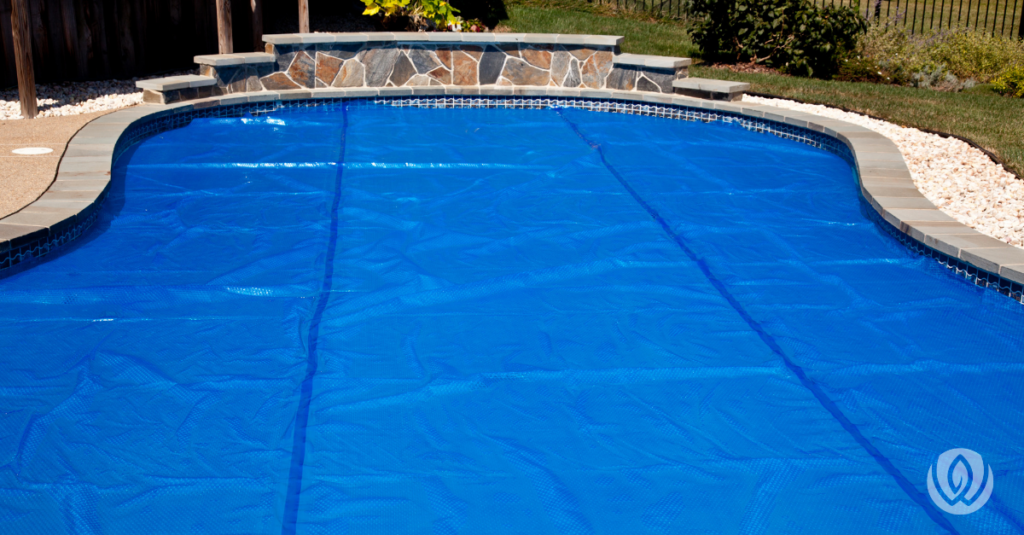
Finally, after doing all that work to ensure your pool is clean, sanitized, and ready to dive into, you’ll want to be sure to protect your efforts by using a high-quality pool cover.
Covers ensure that debris doesn’t infiltrate your pool. They also protect against UV rays, which can break down your sanitizer, lessening its effectiveness. There are even specialty covers that lock, making your yard as safe as it is serene.
By following this list, you'll be well on your way to a healthy, happy summer with your loved ones. Summer is shorter than any of us wants to admit, so let’s make sure you always have a clean, safe pool for making new memories together.
If looking ahead to summer has you dreaming of other projects to transform your backyard into a luxury outdoor oasis, LiveWell Outdoors is here to help.
Now is the perfect time to plan your dream poolside retreat—schedule a consultation today and discover how we can help you build the backyard of your dreams.
"*" indicates required fields
